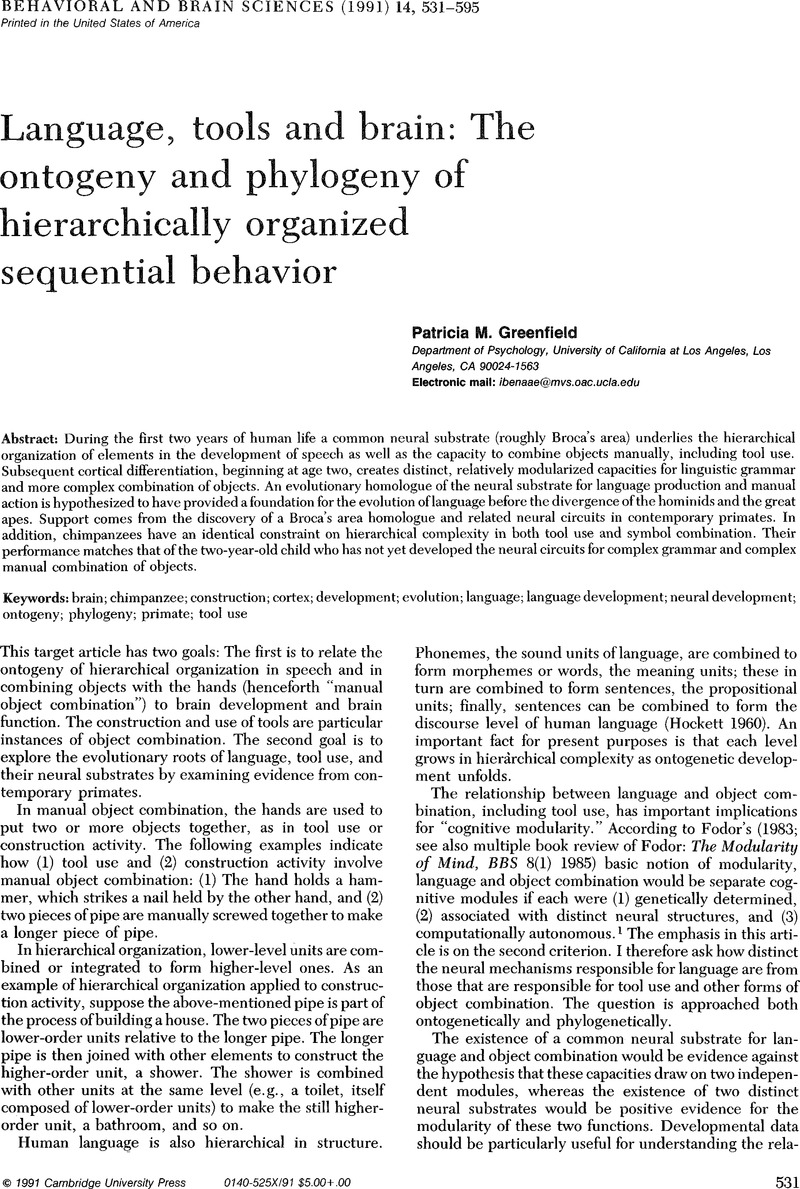Crossref Citations
This article has been cited by the following publications. This list is generated based on data provided by Crossref.
Pepperberg, Irene M.
1994.
Language and cognition: The interesting case of subjects “P”.
Behavioral and Brain Sciences,
Vol. 17,
Issue. 2,
p.
359.
Westergaard, Gregory Charles
1994.
Language, tools and neurobehavioral laterality.
Behavioral and Brain Sciences,
Vol. 17,
Issue. 2,
p.
360.
Piñon, Denise
and
Greenfield, Patricia M.
1994.
Does everybody do it? Hierarchically organized sequential activity in robots, birds and monkeys.
Behavioral and Brain Sciences,
Vol. 17,
Issue. 2,
p.
361.
Andreae, John H.
and
Ryan, Shaun W.
1994.
Associative learning and task complexity.
Behavioral and Brain Sciences,
Vol. 17,
Issue. 2,
p.
357.
Kuldas, Seffetullah
Ismail, Hairul Nizam
Hashim, Shahabuddin
and
Bakar, Zainudin Abu
2013.
Unconscious learning processes: mental integration of verbal and pictorial instructional materials.
SpringerPlus,
Vol. 2,
Issue. 1,



